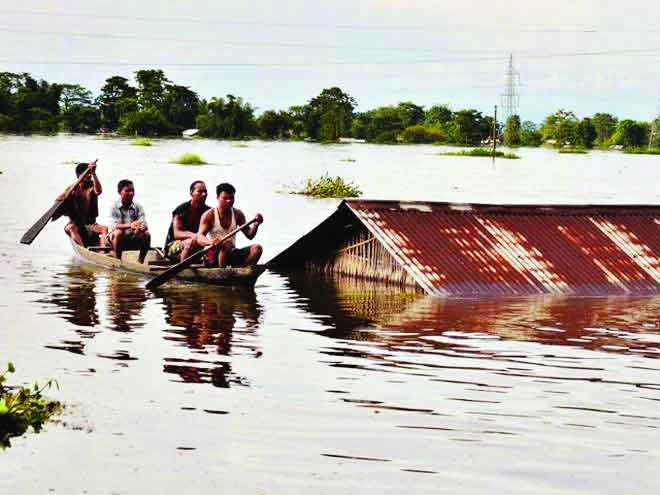The Brahmaputra will spill its banks year after year, so both humans and animals need a new rescue act
The floods in the Brahmaputra are an annual dirge, bringing with them untold misery to humans and animals alike besides the massive battering of farmlands and crops. Of course, the usual questions can always be asked as to why corrective mechanisms, evacuation drills and riverine overflows are never factored in annual disaster preparedness plans. But fact of the matter is, with years of climate change intensifying rainfall patterns in the Northeast and given the geographical lay of the land, any preparedness falls short. Successive floods have been pushing embankments and boundaries inward with hundreds of acres of land destroyed forever. The fragile hills in the Brahmaputra basin are prone to major landslides, further aggravated by deforestation and mining. The spate of dam construction in Arunachal Pradesh has not made it any easier on Assam either. The changing course of rivers and their tributaries have meant that lakhs of villagers live in unpredictable scenarios as riverine refugees, shifting to higher ground or moving to temporary camps, losing standing crops, giving up their traditional livelihood and economic activities. The rains and floods have significantly impacted the State’s GDP.
But while relief focusses on efforts to save human lives, it is wildlife that gets most compromised in times of crisis. The death toll of animals has gone up to 30 with the carcasses of seven, including three one-horned rhinos and an elephant, surfacing from the world-famous Kaziranga National Park. Officials said that 90 per cent of the park is still under water and social media cheered a forest officer for sharing a short video of saving a rhinoceros calf from drowning in the raging waters. The one-horned rhino is already an endangered species and the flood-related toll every year now threatens its very survival. Traditionally, thousands of animals, including rhinos and elephants, leave the sanctuary for higher ground when they sense the rains. But since a national highway bifurcates the corridor that links the park with higher terrain, many of them are either hit by speeding vehicles or poached. The largest casualties are of ungulates, mainly deer, a species not talked about enough. However, with the flood fury becoming monstrous every year, wildlife policy-makers must now seriously consider relocating animals of Kaziranga, whose grasslands actually thrive on silt brought down by the rivers, to safer tracts like the Terai. Floods will keep recurring but there are no structural short cuts to refilling eroded land or changed topography. We need to change our collective mindset, one that assesses long-term threats and works backwards to keep both human and animals safe. And alive.


























